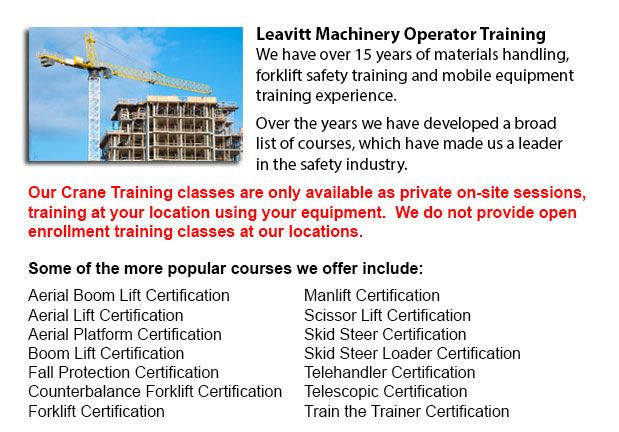
Overhead Crane Training Avondale - The overhead crane is a piece of machine which could move and lift large, heavy things that can't be handled manually. Usually, overhead cranes are fixed in position. These equipment are capable of moving huge volumes of things. Overhead cranes are normally utilized in steel mills to handle the steel during the fabrication process. These cranes are seen at ports throughout the globe, moving things off and on ships.
These kinds of cranes are made to support a permanent beam or rail fixed on a support structure. Cranes are usually constructed right into another structure. Alternatively, a platform can be built to hold the beam in place. The fixed design of overhead cranes gives them great stability, that allows them to handle the very heavy loads necessary in heavy industries like steel and shipping. Some makes of mobile overhead cranes are designed to be pulled utilizing big motor vehicles.
The overhead crane operates via a mechanism mounted on a trolley, which runs along the rail. An overhead crane is designed to run just back and forth. Things are lowered and lifted by running cable or rope through the trolley-mounted mechanism, and afterward moved horizontally along the rail. This back and forth movement is adequate. Like for example, at a port, a container ship is positioned next to the crane, and the crane operator sends the mechanism back and forth along the trolley to transport merchandise between a train or truck and the ship. Jib cranes are a lot more flexible and have booms that swing for moving merchandise in multiple directions.
The history of the overhead crane started during the eighteen seventies, when some designs were developed for a variety of uses. Smaller overhead crane styles also exist for use in businesses where heavy supplies should be lifted. A home workshop, like for example, might need the use of an overhead crane to be able to shuttle lumber, finished products and tools between the loading area and workshop. Regardless of the use, overhead cranes should only be made use of by those who have received overhead crane training.
-
Forklift Certification Courses Avondale
Forklift Certification Courses Avondale - Forklift certification courses really help to be able to make sure that companies using forklifts, follow the local and regional rules. The drivers of the forklift need to go through forklift certification pr... More -
Manlift Certification Avondale
Manlift Certification Avondale - The Elevated Platforms and Manlifts Certification course helps to provide the required training on the work practices, safe operating procedures, rules and regulations regarding the daily activities for the operators... More -
Manlift Operator Training Avondale
Manlift Operator Training Avondale - The aerial lift or manlift is a specialized type of hydraulic platform that is intended to hoist a person vertically giving it an alternate name of a vertical personnel lift. These machinery are widely used for a... More -
Telescopic Training Avondale
Telescopic Training Avondale - Telescopic Handlers are a type of forklift, normally called telehandlers. This machine has been increasing in popularity because of its greater lift heights and its versatility. It is often preferred over the convention... More -
Heavy Equipment Training Avondale
Heavy Equipment Training Avondale - The two most common types of heavy equipment training are classed into the categories of equipment; equipment that is fashioned with rubber tires or those with tracks. The tracked vehicle are heavy duty equipment l... More -
Aerial Lift Train the Trainer Avondale
Aerial Lift Train the Trainer Avondale - The Aerial Lifts Train the Trainer Certification Program would teach trainers how to efficiently train operators in safe industrial mobile equipment operation. Trainers are provided with in-depth instruction a... More -
Overhead Crane Safety Training Avondale
Overhead Crane Safety Training Avondale - The overhead crane safety training program is meant to equip the operators with the right knowledge and skills in the areas of: crane safety measures, accident avoidance, materials handling, and stock and equ... More -
Heavy Equipment Training Schools Avondale
Heavy Equipment Training Schools Avondale - When choosing an operator training course, there are numerous heavy equipment training schools to select from. In order to ascertain the qualifications you would attain, it is very important to check some a... More

Forklift Training Avondale
TOLL FREE: 1-888-254-6157
Avondale, Arizona
forkliftcertificationavondale.com
Email Us
About Us


